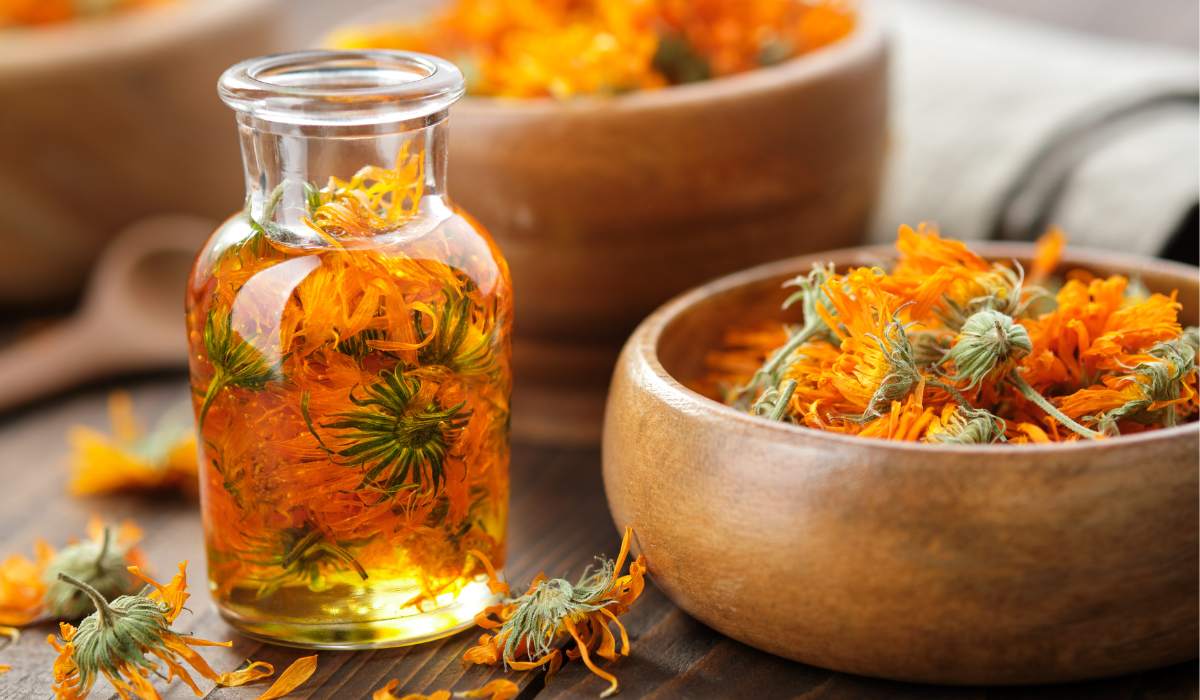Any of These Carrier Oils for Skin Can Transform Your Skin in Just Weeks!
As a skincare formulator, I know how overwhelming it can be to choose the right carrier oil for your skin.
With so many options in the market, it’s important to pick one that suits your skin type and needs. And this takes time.
Whether you’re looking for something lightweight and non-greasy or rich and deeply moisturising, there’s a carrier oil perfect for you. But you need to understand how each oil works, what skin type is it good for, which skin concerns is it aimed at, etc etc.
In this guide, I’ll walk you through some of the best options, explaining their unique benefits and helping you find the one that will work wonders for your skin. I also prepared a VERY helpful table below that makes picking your carrier oil very easy.
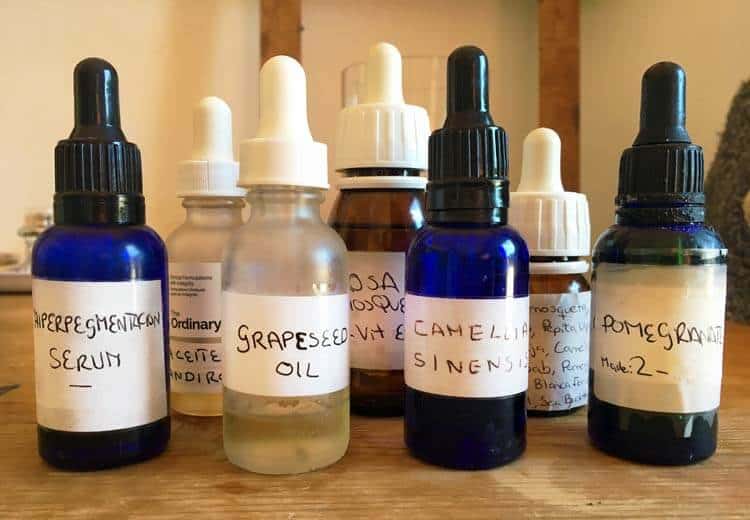
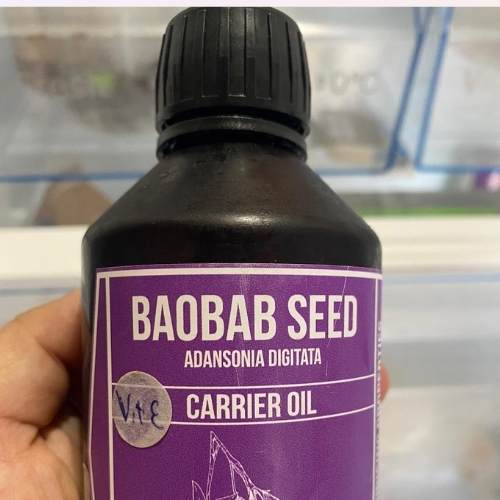
(Disclaimer: I link to affiliate products at absolutely no extra cost to you if you make a purchase)
1. Jojoba Oil (for ALL skin types!)
- Skin Type: All skin types, especially oily/acne-prone.
- Benefits: Closest to skin’s natural sebum; balances oil production; moisturizes without clogging pores.
How to use jojoba oil
- How to use: Apply 2-3 drops directly to face after cleansing, morning and night
- Pro tip: Mix with your favourite moisturiser for an extra hydration boost
- Expected results: Get ready to say goodbye to that annoying oily sheen! In just 2-3 weeks, you’ll notice your skin looking more balanced and clear. Breakouts should start to disappear as you use the oil. Your skin will feel comfortable in its own “oil”. You will wonder why you didn’t try this sooner.
- My recommended Jojoba oil for skin here.
2. Sweet Almond Oil (for dry, sensitive or normal skin)
- Skin Type: Dry, sensitive, and normal skin.
- Benefits: High in vitamins E and A; soothes irritated skin; excellent for moisturising and calming.
How to use sweet almond oil
- How to use: After cleansing, massage 4-5 drops into slightly damp skin, focusing on dry areas
- Pro tip: Add a drop to your night cream for an extra moisture boost
- Expected results: Within 2-3 weeks, you’ll likely notice a significant improvement in skin texture. Dry patches will diminish, leaving your skin feeling smoother and more supple. The natural vitamin E content may also help in reducing the appearance of fine lines, giving your skin a more youthful, radiant appearance.
- My recommended sweet almond oil for skin here
3. Coconut Oil (Fractionated or Virgin – for dry or sensitive skin)
- Skin Type: Dry and sensitive skin.
- Benefits: Hydrating; antibacterial; locks in moisture; virgin coconut oil can be comedogenic for oily skin.
How to use coconut oil (fractionated or virgin)
- How to use: Apply a thin layer to clean skin before bedtime, allowing it to absorb overnight
- Pro tip: Use as a natural makeup remover – it’s particularly effective for waterproof mascara
- Expected results: After regular use for about 4 weeks, you may observe increased skin hydration and a healthier skin barrier. Virgin coconut oil users might also benefit from its antibacterial properties, potentially seeing a reduction in skin blemishes and a more even complexion.
- My recommended coconut oil for skin here
4. Argan Oil (for mature or dry skin)
- Skin Type: All skin types, especially mature or dry skin.
- Benefits: Rich in antioxidants and fatty acids; reduces signs of ageing; restores elasticity and smoothness.
How to use argan oil
- How to use: Warm 4-5 drops between palms and press gently into skin before bed
- Pro tip: Use as a cuticle oil for healthier nails
- Expected results: Imagine waking up to skin that feels like it’s been kissed by a cloud! In about 4-6 weeks, you’ll start noticing fine lines playing hide and seek (and mostly hiding). Your skin will feel very supple and smooth, you might catch yourself touching your face more often. I remember doing this when using argan oil daily. It is a blessing of an oil.
- My recommended argan oil for skin here
5. Grape seed Oil (for acne-prone or combination skin)
- Skin Type: Oily, acne-prone, and combination skin.
- Benefits: Lightweight; absorbs quickly; helps control sebum; rich in antioxidants.
How to use grape seed oil
- How to use: Use as a light moisturiser, 2-3 drops all over face
- Pro tip: Great base for DIY massage oil blends
- Expected results: Within 3-4 weeks of consistent use, you’re likely to notice a more balanced complexion. The lightweight nature of grapeseed oil helps regulate sebum production, potentially reducing shine in oily areas while still providing adequate moisture. Its antioxidant content may also contribute to a brighter, more youthful-looking skin tone.
- My recommended grape seed oil for skin here
6. Rosehip Seed Oil (for mature, dry or sun damaged skin)
- Skin Type: Mature, dry, or sun-damaged skin.
- Benefits: Rich in vitamins A and C; reduces fine lines, scars, and hyperpigmentation; regenerates skin cells.
How to use rosehip seed oil
- How to use: Apply 3-4 drops to damp skin after toning, once daily
- Pro tip: Mix with your sunscreen for added protection and nourishment
- Expected results: In 8-12 weeks, get ready for a complexion comeback! Facial marks should start to disappear. Same with sun damage. Your skin tone will even out really nicely. Please rethink using foundation. Your skin should be glowing in just a few weeks of daily use.
- My recommended rosehip oil for skin here
7. Avocado Oil (for dry, ageing or sensitive skin)
- Skin Type: Dry, ageing, and sensitive skin.
- Benefits: Deeply moisturising; rich in vitamins E and D; enhances collagen production; repairs dry or damaged skin.
How to use avocado oil
- How to use: Warm 2-3 drops between your palms and gently press into the skin, focusing on areas prone to dryness
- Pro tip: Use as a nourishing cuticle oil to keep hands looking youthful
- Expected results: After about 4-6 weeks, you may observe a notable improvement in skin elasticity and hydration. The rich fatty acid content of avocado oil can help plump up the skin, potentially reducing the appearance of fine lines and wrinkles, especially around the eyes and mouth.
- My recommended avocado oil for skin here
8. Apricot Kernel Oil (for sensitive, dry or mature skin)
- Skin Type: Sensitive, dry, and mature skin.
- Benefits: Softens and soothes irritated skin; high in vitamin A; gentle for delicate skin.
How to use apricot kernel oil
- How to use: Apply 3-4 drops to clean, damp skin, gently massaging in upward motions
- Pro tip: Mix with a bit of brown sugar for a gentle, homemade facial scrub
- Expected results: Within 2-3 weeks of regular use, you’re likely to notice softer, more supple skin. The lightweight nature of apricot kernel oil makes it ideal for sensitive skin, potentially reducing redness and irritation. Its vitamin A content may also contribute to a more even skin tone and improved skin texture.
- My recommended apricot kernel oil for skin here
9. Olive Oil (for dry or sensitive skin)
- Skin Type: Dry and sensitive skin.
- Benefits: Deeply moisturising; rich in antioxidants and vitamins; protective barrier for skin.
How to use olive oil
- How to use: After your evening skincare routine, pat a few drops onto areas needing extra moisture
- Pro tip: Use as a natural, nourishing treatment for dry hair ends
- Expected results: After about 4 weeks, you may observe increased skin hydration and improved skin barrier function. Olive oil’s rich antioxidant content could help protect against environmental stressors, potentially leading to a more resilient, healthier-looking complexion over time.
- My recommended olive oil for skin here
10. Hemp Seed Oil (for oily, acne-prone, combination or mature skin)
- Skin Type: Oily, acne-prone, mature and combination skin.
- Benefits: Non-comedogenic; balances oily skin; anti-inflammatory; calms irritated skin.
How to use hemp seed oil
- How to use: Apply 4-5 drops to clean skin, gently massaging until absorbed
- Pro tip: Mix with aloe vera gel for a soothing, anti-inflammatory face mask
- Expected results: Within 2-3 weeks, you might notice a calmer, more balanced complexion. Hemp seed oil’s anti-inflammatory properties can help soothe irritated skin, potentially reducing redness and sensitivity. Its non-comedogenic nature makes it suitable for most skin types, possibly helping to clear congested pores without causing breakouts.
- My recommended hemp seed oil for skin here
11. Sunflower Oil (for all skin types, particularly good for dry and sensitive skin)
- Skin Type: All skin types, especially dry and sensitive.
- Benefits: Light and easily absorbed; high in vitamin E; prevents moisture loss; anti-inflammatory properties.
How to use sunflower oil
- How to use: Blend a few drops with your daily moisturiser for an extra hydration boost
- Pro tip: Use as a base for homemade lip balms to keep lips soft and supple
- Expected results: After consistent use for about 3-4 weeks, you may observe improved skin hydration and a stronger skin barrier. The high vitamin E content in sunflower oil could contribute to reduced signs of skin damage, potentially resulting in a more even, radiant complexion. Its gentle nature makes it particularly beneficial for sensitive or irritation-prone skin.
- Here’s my recommended sunflower oil for skin
12. Baobab Oil (for dry, mature or sensitive skin)
- Skin Type: Dry, mature, and sensitive skin.
- Benefits: Regenerating and good for ageing skin; improves elasticity; rich in omega fatty acids.
How to use baobab oil
- How to use: Apply 3-4 drops to clean skin, gently massaging in circular motions
- Pro tip: Mix with your body lotion to nourish dry, crepey skin on arms and legs
- Expected results: After about 4-6 weeks of regular use, you may notice improved skin elasticity and a more radiant complexion. Baobab oil’s high vitamin and omega fatty acid content could help reduce the appearance of fine lines and promote a smoother, more youthful skin texture.
- Here’s my recommended baobab oil for skin
13. Pomegranate Seed Oil (for mature or dry skin)
- Skin Type: Mature and dry skin.
- Benefits: Anti-inflammatory; promotes skin regeneration; packed with antioxidants.
How to use pomegranate seed oil
- How to use: Pat 2-3 drops onto skin after cleansing and toning, focusing on areas with sun damage
- Pro tip: Add a drop to your lipstick for an antioxidant boost and subtle sheen
- Expected results: Within 6-8 weeks, you might observe a more even skin tone and improved skin firmness. The potent antioxidants in pomegranate seed oil may help combat signs of photoaging, potentially reducing the appearance of age spots and enhancing overall skin vitality.
- Here’s my recommended pomegranate seed oil for skin
14. Castor Oil (for dry, acne-prone or combination skin. Also good for mature skin)
- Skin Type: Dry, acne-prone, and combination skin. Also good for mature skin.
- Benefits: Hydrating and antibacterial; great for cleansing; stimulates collagen production.
How to use castor oil
- How to use: Mix a few drops with your night cream and apply before bed
- Pro tip: Use as a natural treatment to promote thicker eyebrows and lashes
- Expected results: After consistent use for about 4 weeks, you may notice improved skin hydration and a smoother complexion. Castor oil’s unique fatty acid composition could help reduce the appearance of fine lines and wrinkles, particularly around the eye area.
- Here’s my recommended castor oil for skin
15. Tamanu Oil (for all skin types, particularly good for acne-prone skin)
- Skin Type: All skin types, especially acne-prone.
- Benefits: Promotes healing; anti-inflammatory; reduces scars and blemishes.
How to use tamanu oil
- How to use: Apply a thin layer to cleansed skin, focusing on areas with scars or hyperpigmentation
- Pro tip: Use as a spot treatment for age spots or sunspots
- Expected results: Within 6-8 weeks of regular application, you might see a reduction in the appearance of scars and dark spots. Tamanu oil’s regenerative properties may help improve overall skin tone and texture, promoting a more even and youthful complexion.
- Here’s my recommended tamanu oil for skin
16. Camellia Seed Oil (for sensitive, dry or mature skin)
- Skin Type: Sensitive, dry, and mature skin.
- Benefits: Lightweight; deeply hydrating; rich in antioxidants; improves skin elasticity.
How to use camellia seed oil
- How to use: Warm 3-4 drops between palms and press gently into skin after your serum
- Pro tip: Use as a lightweight, non-greasy hair oil to add shine and tame frizz
- Expected results: After about 3-4 weeks, you may notice increased skin suppleness and a healthy glow. Camellia seed oil’s antioxidant content could help protect against environmental stressors, potentially slowing the visible signs of ageing and promoting a more youthful appearance.
- Here’s my recommended camellia oil for skin
17. Marula Oil (for dry, combination or ageing skin)
- Skin Type: Dry, combination, and ageing skin.
- Benefits: Hydrating without being greasy; antioxidant-rich; reduces fine lines and redness.
How to use marula oil
- How to use: Apply 4-5 drops to slightly damp skin, massaging until fully absorbed
- Pro tip: Mix with your foundation for a dewy, luminous finish
- Expected results: Within 4-6 weeks of consistent use, you might observe improved skin hydration and a reduction in the appearance of fine lines. Marula oil’s high oleic acid content may help strengthen the skin barrier, leading to plumper, more resilient skin over time.
- Here’s my recommended marula oil for skin
18. Macadamia Nut Oil (for dry, mature or sensitive skin)
- Skin Type: Dry, mature, and sensitive skin.
- Benefits: Rich in fatty acids; restores moisture; mimics skin’s natural oils.
How to use macadamia nut oil
- How to use: Blend a few drops with your moisturiser and apply morning and night
- Pro tip: Use as a nourishing cuticle oil to keep hands looking youthful
- Expected results: After about 3-4 weeks, you may notice softer, more supple skin. The palmitoleic acid in macadamia nut oil, which is similar to sebum, could help restore skin’s natural balance, potentially improving elasticity and reducing the appearance of fine lines.
- Here’s my recommended macadamia nut oil for skin
19. Sea Buckthorn Oil (for all skin types, especially good for mature/ageing skin)
- Skin Type: All skin types, especially dry and mature skin.
- Benefits: High in vitamins C and E; nourishes and regenerates skin; heals scars and sun damage.
How to use sea buckthorn oil
- How to use: Mix 1-2 drops with your regular facial oil or night cream
- Pro tip: Add a drop to your lip balm for extra nourishment and a subtle tint
- Expected results: Within 6-8 weeks of regular use, you might see improvements in skin tone and texture. Sea buckthorn oil’s high vitamin C and E content may help brighten the complexion and reduce the appearance of age-related skin damage, promoting a more youthful, radiant look.
- Here’s my recommended sea buckthorn oil for skin
20. Kukui Nut Oil (for sensitive, dry or damaged skin)
- Skin Type: Sensitive, dry, and damaged skin.
- Benefits: Soothes irritation; hydrates deeply; high in fatty acids and vitamins.
How to use kukui nut oil
- How to use: Apply 3-4 drops to clean, damp skin, gently patting into the skin
- Pro tip: Use as a soothing after-sun treatment to prevent peeling and reduce redness
- Expected results: After about 4 weeks of consistent application, you may observe increased skin hydration and improved skin barrier function. Kukui nut oil’s rich fatty acid profile could help soothe sensitive or irritated skin, potentially reducing inflammation and promoting a calmer, more balanced complexion.
- Here’s my recommended kukui nut oil for skin
21. Borage Seed Oil (for dry, sensitive or ageing skin)
- Skin Type: Dry, sensitive, and aging skin.
- Benefits: Anti-inflammatory; deeply moisturising; helps with eczema and redness.
How to use borage seed oil
- How to use: Mix 2-3 drops with your night cream and apply to face and neck
- Pro tip: Add a few drops to bathwater for a nourishing, full-body treatment
- Expected results: Within 4-6 weeks of regular use, you may notice improved skin elasticity and hydration. Borage oil’s high gamma-linolenic acid (GLA) content could help reduce inflammation and support skin barrier function, potentially leading to smoother, more supple skin.
- Here’s my recommended borage seed oil for skin
22. Evening Primrose Oil (for dry, ageing or acne-prone skin)
- Skin Type: Dry, ageing, and acne-prone skin.
- Benefits: Balances hormones; calms irritated skin; reduces acne and fine lines.
How to use evening primrose oil
- How to use: Apply 3-4 drops directly to clean skin, focusing on areas prone to hormonal changes
- Pro tip: Use as a scalp treatment to promote healthier, shinier hair
- Expected results: After about 6-8 weeks, you might observe improvements in skin texture and tone. Evening primrose oil’s hormone-balancing properties may help alleviate dryness and irritation associated with menopause, potentially resulting in a more balanced and radiant complexion.
- Here’s my recommended evening primrose oil for skin
23. Black Seed Oil (for oily, acne-prone or inflamed skin)
- Skin Type: Oily, acne-prone, and inflamed skin.
- Benefits: Anti-inflammatory; reduces acne; improves skin tone.
How to use black seed oil
- How to use: Blend 2-3 drops with your daily moisturiser and apply to face and neck
- Pro tip: Mix with honey for a purifying face mask to combat blemishes and uneven skin tone
- Expected results: Within 4-6 weeks of consistent application, you may notice a more even skin tone and reduced inflammation. Black seed oil’s antioxidant and anti-inflammatory properties could help improve overall skin health, potentially reducing the appearance of age spots and promoting a clearer complexion.
- Here’s my recommended black seed oil for skin
24. Safflower Oil (for sensitive, dry or inflamed skin)
- Skin Type: Sensitive, dry, and inflamed skin.
- Benefits: Rich in linoleic acid; soothes irritation; non-comedogenic.
How to use safflower oil
- How to use: Warm 4-5 drops between palms and gently press into damp skin
- Pro tip: Use as a gentle, natural makeup remover
- Expected results: After about 3-4 weeks of regular use, you might observe increased skin hydration without greasiness. Safflower oil’s high linoleic acid content may help maintain skin barrier function, potentially leading to plumper, more resilient skin that’s better equipped to retain moisture.
- Here’s my recommended safflower oil for skin
25. Neem Oil (for acne-prone or sensitive skin. CAREFUL, this is a very strong oil!!)
- Skin Type: Oily, acne-prone, and sensitive skin.
- Benefits: Antibacterial; antifungal; helps with acne, eczema, and scars.
How to use neem oil
- How to use: Dilute 1-2 drops with a carrier oil and apply as a spot treatment (VERY IMPORANT to dilute it!! Neem oil is VERY strong!!)
- Pro tip: Mix a drop with your shampoo to promote a healthier scalp
- Expected results: Within 4-6 weeks, you may notice improvements in problematic skin areas. Neem oil’s potent antibacterial and anti-inflammatory properties could help address issues like eczema or psoriasis flare-ups, potentially resulting in calmer, more balanced skin.
- Here’s my recommended neem oil for skincare
26. Peach Kernel Oil (for sensitive, dry or mature skin)
- Skin Type: Sensitive, dry, and mature skin.
- Benefits: Light and easily absorbed; softens skin; rich in vitamins A and E.
How to use peach kernel oil
- How to use: Apply 3-4 drops to slightly damp skin after cleansing
- Pro tip: Blend with a drop of lavender essential oil for a soothing nighttime facial massage
- Expected results: After about 3-4 weeks of consistent use, you might observe softer, more supple skin. Peach kernel oil’s high vitamin content may help nourish and revitalise mature skin, potentially improving skin texture and reducing the appearance of fine lines.
- Here’s my recommended peach kernel oil for skin
27. Watermelon Seed Oil (for oily or acne-prone skin)
- Skin Type: Oily and acne-prone skin.
- Benefits: Balances sebum; non-comedogenic; light and fast-absorbing.
How to use watermelon seed oil
- How to use: Mix 2-3 drops with your serum or lightweight moisturiser
- Pro tip: Use as a hair oil to add shine and control frizz without weighing hair down
- Expected results: Within 4-6 weeks of regular application, you may notice a more balanced complexion. Watermelon seed oil’s lightweight nature and linoleic acid content could help regulate sebum production, potentially leading to clearer pores and a more refined skin texture.
- Here’s my recommended watermelon seed oil for skin
28. Carrot Seed Oil (for dry or mature skin)
- Skin Type: Dry and mature skin.
- Benefits: Rich in antioxidants; promotes cell regeneration; helps with sun damage.
How to use carrot seed oil
- How to use: Blend 1-2 drops with your facial oil or night cream
- Pro tip: Mix with sunscreen for added antioxidant protection during the day
- Expected results: After about 6-8 weeks of consistent use, you might observe improvements in skin tone and texture. Carrot seed oil’s high antioxidant content may help combat signs of photoaging, potentially reducing the appearance of fine lines and promoting a more even, radiant complexion.
- My recommended carrot seed oil for skin
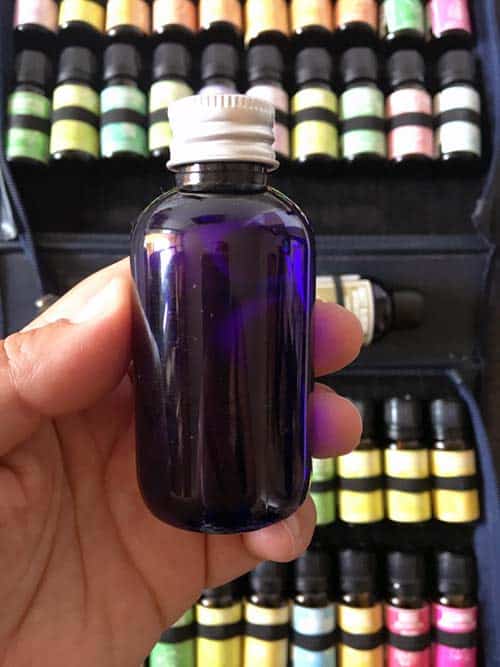
How to choose the right carrier oil for your skin type
Choosing the perfect carrier oil is all about finding the one that matches your skin’s unique needs.
Let’s make it simple:
- For dry skin:
Look for oils that are rich and deeply moisturising, like avocado or olive oil. These will help lock in that much-needed moisture and keep your skin hydrated and happy. - For oily or acne-prone skin:
Lightweight oils like grapeseed or hemp seed oil are your best friends. They absorb quickly and won’t clog your pores, helping balance oil production without leaving a greasy feel. - For sensitive skin:
Go for something gentle and soothing, like sweet almond or apricot kernel oil. These oils are less likely to cause irritation and can help calm inflammation. - For mature or ageing skin:
Oils like rosehip or argan are fantastic choices. Packed with antioxidants, they help boost skin regeneration and reduce the appearance of fine lines.
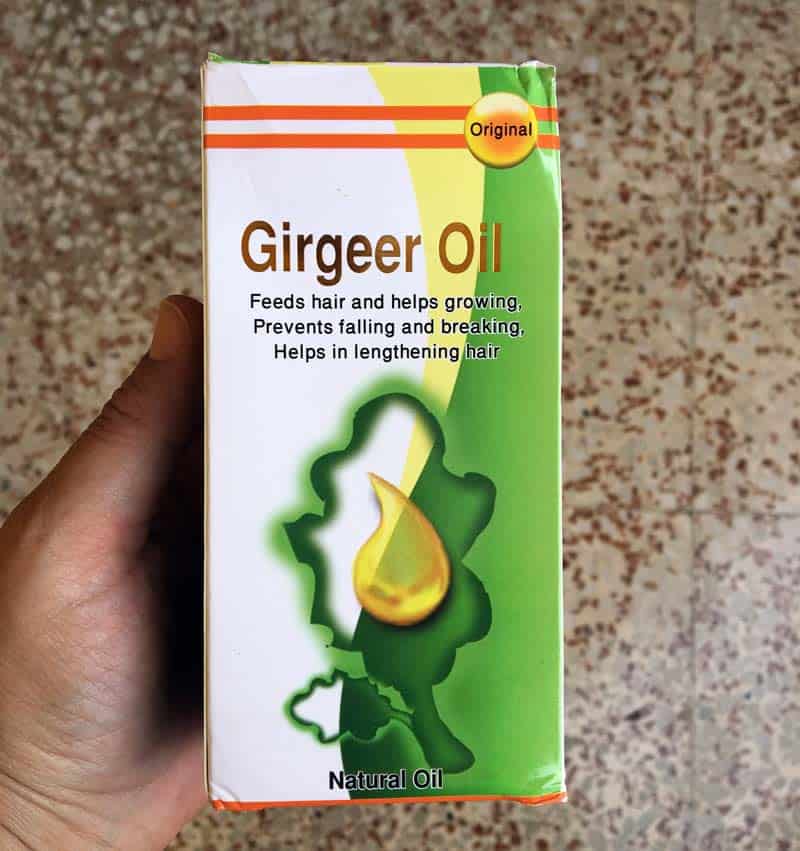
What else to consider
- Comedogenic rating:
This rating tells you how likely an oil is to clog your pores (see table below). Oils like coconut can be more comedogenic (more likely to cause breakouts), while others like jojoba or sunflower oil are much safer for your skin. - Texture and absorption speed:
This one’s huge for me! When I was younger, I avoided oils because the idea of having oil on my face didn’t appeal to me. But now? I’m obsessed! Every day I slather on so much oil, and my skin loves it.
If you prefer a lightweight feel, go for oils that absorb quickly, like marula or grapeseed. They give you all the benefits without feeling heavy on your skin.
But if you’re after something richer for a night-time treatment, try avocado or baobab oil. These oils are more luxurious and perfect for deeply nourishing your skin while you sleep…
Here’s a table that will help with absorption rate, skin type, concerns, etc etc. It is very helpful, take a look (and bookmark this page if necessary for future reference):
| Carrier Oil | Dry Skin | Oily/Acne-Prone | Sensitive Skin | Mature Skin | Fast Absorption | Comedogenic Rating (0-5) | Prevent Ageing | Good for Rosacea |
|---|---|---|---|---|---|---|---|---|
| Jojoba Oil | ✓ | ✓ | ✓ | ✓ | ✓ | 1 | ✓ | ✓ |
| Sweet Almond Oil | ✓ | ✓ | ✓ | ✓ | 2 | ✓ | ||
| Coconut Oil | ✓ | 4 | ||||||
| Argan Oil | ✓ | ✓ | ✓ | ✓ | ✓ | 0 | ✓ | ✓ |
| Grapeseed Oil | ✓ | ✓ | ✓ | 1 | ||||
| Rosehip Seed Oil | ✓ | ✓ | ✓ | ✓ | ✓ | 1 | ✓ | ✓ |
| Avocado Oil | ✓ | ✓ | ✓ | 3 | ✓ | |||
| Apricot Kernel Oil | ✓ | ✓ | ✓ | ✓ | ✓ | 2 | ✓ | ✓ |
| Olive Oil | ✓ | ✓ | ✓ | 2 | ✓ | |||
| Hemp Seed Oil | ✓ | ✓ | ✓ | ✓ | ✓ | 0 | ✓ | ✓ |
| Sunflower Oil | ✓ | ✓ | ✓ | ✓ | ✓ | 0 | ✓ | ✓ |
| Baobab Oil | ✓ | ✓ | ✓ | ✓ | ✓ | 2 | ✓ | ✓ |
| Pomegranate Seed Oil | ✓ | ✓ | ✓ | ✓ | ✓ | 1 | ✓ | ✓ |
| Castor Oil | ✓ | 1 | ✓ | |||||
| Tamanu Oil | ✓ | ✓ | ✓ | ✓ | ✓ | 2 | ✓ | ✓ |
| Camellia Seed Oil | ✓ | ✓ | ✓ | ✓ | ✓ | 1 | ✓ | ✓ |
| Marula Oil | ✓ | ✓ | ✓ | ✓ | 2 | ✓ | ||
| Macadamia Nut Oil | ✓ | ✓ | ✓ | ✓ | 2 | ✓ | ||
| Sea Buckthorn Oil | ✓ | ✓ | ✓ | ✓ | ✓ | 1 | ✓ | ✓ |
| Kukui Nut Oil | ✓ | ✓ | ✓ | ✓ | ✓ | 1 | ✓ | ✓ |
How to use carrier oils in your skincare routine
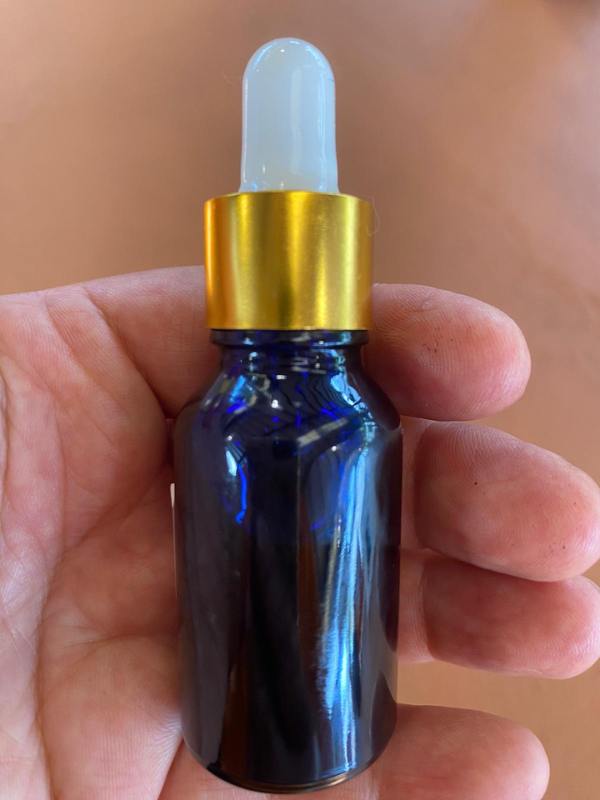
Incorporating carrier oils into your skincare routine is super simple and can make a real difference to your skin.
Whether you’re just starting out or already a skincare pro, these oils can add a natural, nourishing touch to your daily rituals.
I’ll break it down for you:
- As a facial oil: After cleansing and toning, apply a few drops of your favourite carrier oil directly to your face and neck. Gently massage it in for a natural glow and to lock in moisture. You can use oils like jojoba, rosehip, or argan on their own or mixed with other oils.
- Add to your moisturiser or serum: Not quite ready to go full-on oil? No worries! Just mix a couple of drops into your daily moisturiser or serum. This gives your skincare a little extra hydration without feeling heavy on the skin.
- Oil cleansing method: Love double cleansing or need something to gently remove makeup? Carrier oils are your best friend here! Massage a small amount of oil onto dry skin, then wipe it off with a warm cloth. It’s perfect for getting rid of dirt while keeping your skin soft and clean—ideal for dry or sensitive skin types.
- DIY masks and treatments: Feeling creative? Add a few drops of carrier oil to your homemade face masks. For example, mix rosehip oil with some clay for a brightening and nourishing mask. You can get as inventive as you want, combining oils with other natural ingredients.
- As a body oil: After your shower or bath, while your skin is still damp, smooth a light layer of carrier oil over your body. This locks in moisture and leaves your skin feeling silky and soft all day long. Argan and sweet almond oil are great choices for this.
No matter how you decide to use them, carrier oils can really elevate your skincare routine. They’re natural, versatile, and give your skin the nourishment it deserves. Your skin will thank you, I promise! 😊
Blending carrier oils with essential oils
If you want to give your skincare routine a boost, try blending carrier oils with essential oils. This combination lets you enjoy the moisturising benefits of carrier oils alongside the more targeted effects of essential oils. Plus, it’s super simple!
- Start with the right carrier oil: Pick a carrier oil that suits your skin type, whether it’s jojoba, rosehip, or sweet almond, etc etc. Take look at the information above, it’ll help you pick.
- Add a few drops of essential oil: Essential oils are potent, so you only need a tiny amount—about 1-2 drops per teaspoon of carrier oil.
Here are some easy blends to try:
- For acne-prone skin:
- Blend 1 tablespoon of jojoba or grapeseed oil with 1-2 drops of tea tree or lavender essential oil. This combo can help soothe irritation, fight bacteria, and balance oil production.
- For dry or mature skin:
- Use 1 tablespoon of rosehip or avocado oil and mix it with 1-2 drops of frankincense or geranium essential oil. These blends help reduce fine lines and improve skin elasticity.
- For a calming, stress-relieving treatment:
- Mix 1 tablespoon of sweet almond or apricot kernel oil with 1-2 drops of chamomile or sandalwood essential oil. This blend is perfect for sensitive skin and works wonders as part of your bedtime ritual.
- For anti-ageing:
- Try 1 tablespoon of antioxidant-rich argan or marula oil, and add 1 drop of rose or ylang-ylang essential oil for a luxurious, anti-ageing facial oil.
Remember!
Always do a patch test before applying any new blend to your face, especially when using essential oils. A little goes a long way with oils.
Be careful with the below mistakes when using carrier oils
While carrier oils are a fantastic addition to any skincare routine, there are a few common mistakes that can prevent you from getting the most out of them. Let’s go over some of these so you can avoid any skincare mishaps!
1. Using too much oil: It’s easy to go overboard with carrier oils, but a little goes a long way. Start with just a few drops and gently massage them into your skin. If you use too much, your skin might feel greasy, or the oil could sit on the surface without properly absorbing.
2. Choosing the wrong oil for your skin type: Not all oils are created equal, and using the wrong one can lead to clogged pores, breakouts, or irritation. For example, if you have oily or acne-prone skin, heavy oils like coconut might clog your pores. On the other hand, lightweight oils like hemp seed or jojoba are better suited for this skin type. Always match your oil to your skin’s needs.
3. Skipping the patch test: When trying a new oil, especially if you’re blending it with essential oils, always do a patch test on a small area of skin before applying it to your face. This helps you avoid allergic reactions or sensitivities, which can lead to redness, itching, or breakouts.
4. Not storing oils properly: Carrier oils can go rancid if they’re not stored correctly. Keep your oils in a cool, dark place, and use dark glass bottles to protect them from light exposure. Some oils, like flaxseed or rosehip, may need to be stored in the fridge to extend their shelf life.
5. Using oils that have gone bad: If your oil smells off or has changed colour, it’s likely gone rancid. Using old oils on your skin can cause irritation or simply won’t provide the same benefits, so always check your products before use.
Please try to avoid these common mistakes.
Storing the carrier oils
Storing your carrier oils the right way is key to keeping them fresh and effective for as long as possible.
- Keep them in a cool, dark place: Heat and light can break down oils and cause them to go rancid faster. A cupboard away from direct sunlight is perfect.
- Use dark glass bottles: Oils stored in dark amber or blue glass bottles are better protected from light, helping them last longer. If your oil came in a plastic or clear bottle, consider transferring it to a darker one.
- Know the shelf life: Most carrier oils will last around 6 months to a year, depending on the oil. Oils with higher polyunsaturated fats, like flaxseed, go bad faster and may need refrigeration.
- Watch for signs of spoilage: If your oil smells off, like it’s gone sour or musty, or if the colour or texture changes, it’s time to toss it. Using old oils can irritate your skin.
Proper storage is simple, but it makes a big difference in keeping your oils fresh and your skin happy! 😊
I hope you’ve enjoyed the information
Above you have what you need to succeed with carrier oils.
Make the most of them – they’re WONDERFUL!

